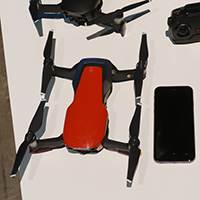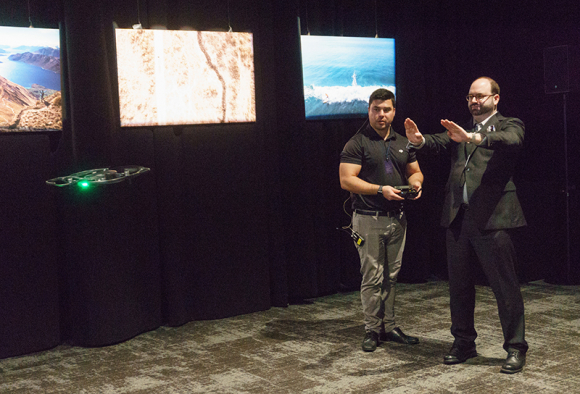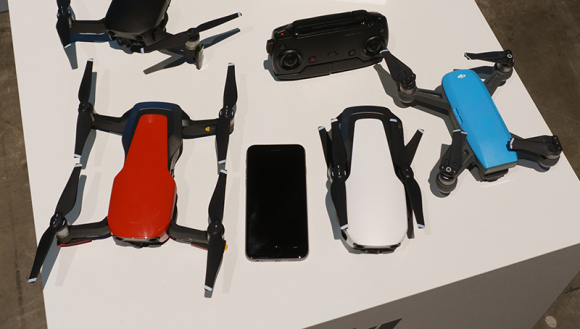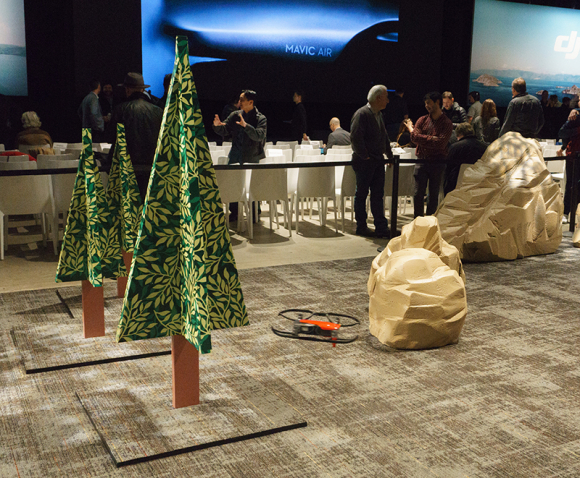Hands-on with the DJI Mavic Air: a capable, portable flying camera
posted Friday, January 26, 2018 at 1:56 PM EDT

Earlier this week, DJI hosted a launch event for its new Mavic Air drone in New York City and I took the opportunity to get a little hands-on time with this svelte new flying camera. If you haven't yet, you should check out our introductory write-up for a rundown of the drone's features and specifications. During the presentation by DJI's Michael Perry, the two things that got the biggest crowd reaction were the Mavic Air's size, and its price. The audience seemed to be impressed with this new drone's combination of capability, portability, and affordability. I'll add one more thing that especially caught my eye: the ability to create a gorgeous 32-megapixel spherical panorama. As we noted in our earlier write-up, the Mavic Air can shoot and stitch these images automatically, and I expect we’ll see a lot of great images from Mavic Airs using this feature. A portion of the shot I saw that really sold me on this feature can be seen below, but I recommend viewing it Mavic Air page of DJI's web site, where you can see this feature's true resolution, as well as its limitation: the sky directly above the drone can't be captured and is simulated instead.
After the presentation, I got a chance to fly the Mavic Air inside the presentation hall using the SmartCapture gesture controls. Although this is not a new feature, I hadn't used it before. I can't say whether it performs better on the Mavic Air than it does on, say, the Spark, but it worked very well right from the get-go for me. Although this is mainly just a feature for taking selfie images and videos, which doesn't interest me, there's no denying it was fun.

DJI likes to say that, when folded, the Mavic Air's "footprint" isn't much larger than a typical smartphone, but obviously it's much thicker. It seemed more like a good-sized paperback book to me. Still, that's awfully compact for a drone that does so much. For a quick-and-dirty reference, at 430 grams, it's a little lighter than many APS-C and Micro Four-Thirds cameras with kit zooms, including the Sony A6000 I had tucked into my small messenger bag. The equation changes a bit when you add a spare battery and the folding remote controller. Still, there's no doubt in my mind that DJI has made good on the Mavic Air's promise of portability.

DJI had also constructed a mock "forest" to show off the Mavic Air's Advanced Pilot Assistance Systems (APAS) feature, which automatically plots a flight path around obstacles. On this test course, I simply commanded the drone to go forward, and it swerved on its own to go around the plastic trees and rocks in DJI's test forest. This looks to be a big boon to less experienced drone pilots when they fly in or around real forests and anywhere else with large obstacles. The DJI rep also demonstrated the Mavic Air's ability to stably hover less than one inch off the carpet, easily dealing with the "dirty air" caused by its own propeller backwash bouncing off the floor. What practical benefit this capability might have is an open question, but it was impressive.

All in all, DJI's big message for this event was "lots of capability in a very small package", and they got that point across with, well, flying colors. There is still a lot more to unpack with the DJI Mavic Air, such as taking it outside the comfort zone of DJI's press event. We'll soon take a look at the image quality, stability in real-world environments, and more as we work towards our review of the latest DJI drone.